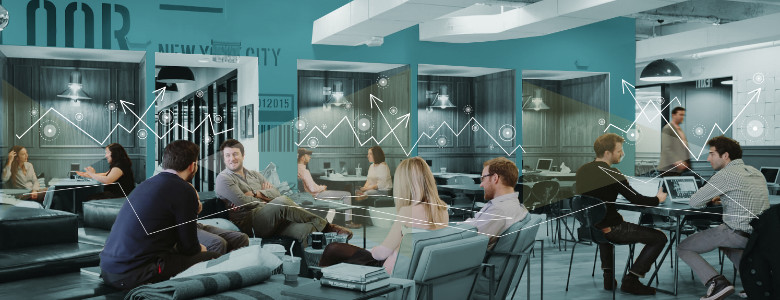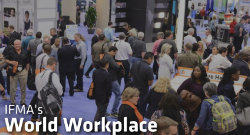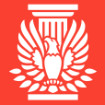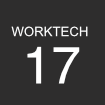The 3 P’s of Workplace Experience You Haven't Heard About

And other great words that you haven't heard enough, yet.
We don’t aspire to take you on too anfractuous an etymological journey this month, but we have noticed a triptych of words we feel deserving of more confabulation. Do read on for what we hope will be a prepossessing exhortation of three paramount workplace "P’s" that may heretofore have circumvented your perspicacity. Enough of our wordy wisecracking - the rest of this newsletter is in plain Engish.
On our minds
Propinquity
proh-ping-kwi-tee
~ nearness in place; proximity.
~ nearness of relation; kinship.
You might remember this concept from science class: "the more particles there are in a box, the greater the chance they’ll run into each other." You might also be familiar with psychologist Theodore Newcomb’s Proximity Principle, which holds that people tend to form relationships with others who are close by. At propinquity’s intersection of density and closeness is where workplaces thrive, because being close to one another improves our performance. This is as true at the city scale at the microscopic and office space levels.
Some densification happens on purpose (as seen in the continued proliferation of coworking sites worldwide), but some has taken place quite by accident—or necessity. Take for example the Silicon Valley pioneers who spent their early days working out of their garages, just because they couldn’t afford office space. They were unintentionally densifying their workspace more than any East Coast company would have done on purpose at that time—but they wound up boosting the performance of their organizations significantly, and tipping the scales of workplace design in US. (The UK has long maintained a communal "London trading desk" office style, regardless of company type or location. The dreaded cubicle is, alas, uniquely American in origin.)
Interestingly, though the modern tech industry ushered in this new wave of density that would prove to be so beneficial, the capabilities technology itself has given us to work remotely have been pulling people out of the workplace and into the individual work silos of living rooms and coffee shops. If we’re to maintain our creativity and productivity in this digital world, we need to start densifying our workplaces on purpose—and opening them up visually so we can see each other! In short, we need a propinquity revolution.
Coworking sites provide one great way to achieve this. Beside a host of other economic and logistical benefits, they offer diversity, communal gathering places, opportunities for "collisions" (unplanned interactions between and among employees and guests), and, for a majority of workers, better performance outcomes versus working alone. No wonder they’re still on the rise.
Prospect
pros-pekt
~ a view, especially of scenery; scene.
~ outlook or view over a region or in a particular direction.
Have you ever gone out to dinner with someone who makes a point of being seated with their back to a wall, facing the door? (Or perhaps this describes you!) What might at first blush seem like an idiosyncratic preference is actually deeply rooted in our psychology.
We feel safest and most in control when our back is protected and we can easily spot any potential threats (or food) coming our way, preferably without being seen ourselves in the process. British geographer Jay Appleton called this "prospect-refuge theory," and we can see examples of it at work throughout human history: think of caves, castle turrets, and—the ultimate modern example—the corner office. The latter is the age-old value of prospect at work in today’s workplace: we humans are hardwired to want to clearly see and surveil the space in front of us, be it the Celtic Sea or a sea of desks.
Sadly, very few American workers are currently afforded this measure of sensory comfort (with the notable exception of those elites in the corner offices!). Instead, most of us are stuck in cubicles, facing into corners with our backs exposed: the absolute inverse of prospect.
Imagine a shift from a cube-based environment with just one or two corner offices to one in which all workers have a good degree of prospect—or even a shift to the compromise of a fully benched environment (a la the London trading desk) that’s wide open. In such an arrangement, the best places to be are still in the back corners looking forward, but at least everyone gets some outward view. We could call this design choice "prospect for the proletariat."
Again, coworking spaces are leading the way when it comes to making prospect a priority. WeWork offices, for example, are known for their efforts to ensure visibility through spaces. The organization consistently uses clear glass instead of opaque walls to separate its conference rooms and private offices, giving occupants a sense of their own space while allowing them to see well into the distance. It all adds up to a feeling of safety, the ability to surveil, and the comfort of control. In other words, ample prospect.
Provenance
prov-uh-nuhns
~ place or source of origin.
A white paper we authored for our client west elm Workspace this year covered the topic of provenance thusly:
"PBS’s Antiques Roadshow has been on the air for 20 years. The enduring appeal of a series that centers on the authenticity of objects shows that provenance is important to people. Similarly, in a recent study with eBay, researchers found that items for sale on the site accompanied by a story sold for substantially more than those without. Clearly ... we place more value on objects and environments we perceive as holding some link to the past—a history, a context, a story to tell."
We may encounter the provenance of our surroundings through verbal or written stories, a la Antiques Roadshow or eBay, or we may, as is more often the case in the built environment, sense it. When we humans see a wrought iron stair railing, for example, we imagine how solid it will feel when grasped in our hand, and we can imagine the welder twisting it. We are more drawn to hand-sized bricks and carved wooden doors that bespeak a mason’s or carpenter’s touch than we are to chunky cement blocks or extruded aluminum frames that can only say "I was spat out by a machine." The former feel authentic; the latter, empty by comparison.
Especially in the information age, when everything feels new, we cherish the richness of our history and a sense of connection to our culture more than ever before. In a time when it’s hard to get off the internet and cities around the world are starting to look the same, we crave a sense of provenance in people, objects, and spaces. That’s why exposed brick walls, reclaimed wood tables, and furniture upholstered in homey fabrics like flannel and wool, all of which evoke a sense of history, are showing up in offices—and why they won’t be going away anytime soon.
Provenance is also being well-employed by, you guessed it, coworking brands, who have been noticeably thoughtful about their adaptive reuse of spaces with cultural significance. A WeWork in Washington, DC was once a Wonder Bread factory; a WeWork in Beijing is a former opium factory! Being in these spaces makes us wonder what life there was like in the past, sparking our imaginations. One of our very favorites (in part because we often work there) is the WeWork at 25 Broadway in Manhattan. It’s a landmarked building dating back to 1921; stepping into its lobby, you’re greeted with domed ceilings, majestic columns, and grand murals. But more than these tectonics, what really gets us is that they don’t call this building "25 Broadway"—they call it “Charging Bull,” in honor of the famous Charging Bull sculpture across the street, which was conceived of as a courageous and can-do antidote to the Wall Street crash of 1986. Talk about embracing provenance.
A hundred-story glass office tower could pop up anywhere in the world, but that old mill in the industrial district has been there for a hundred years, and it will be for a hundred more. Feels good, doesn’t it?
From the archives
In Case You Missed It

IFMA World Workplace 2017
You might still be able to catch this one! Yesterday morning in Houston, Texas, we spoke at the International Facilities Management Association's annual gathering about how multisensory workplaces provide an unparalleled opportunity to express workplace "EQ."

CMX Summit 2017
On September 19 and 20, we envied those in Los Angeles meeting with Community Management Xchange gurus to learn more about people-centric approaches to business, both online and in the workplace. (We also loved CMX's 2014 summit in San Francisco.)

Accelerating Innovation: DesignX@MIT
In September 13, The MIT Club of New York and MITArchA hosted over 70 attendees for breakfast and a talk by students and leaders of DesignX, the startup accelerator of MIT’s School of Architecture + Planning.

In Work Design:
A follow-up to 2013’s “User Experience Design Revives Corporate Real Estate,” this article expands on the concept of harnessing occupant data to inform better building and design practices that benefit both architects and end users.
Looking Ahead
Call it counterintuitive, but the chill of fall puts a spring in our step. Catch up with us at one or more of the following events, where we’ll be learning, teaching, and connecting about people and spaces.







